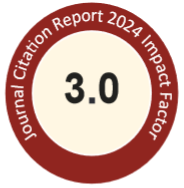Keywords
Cathinone, Isomer, LC-QTOF-MS, Metabolism
Abstract
Synthetic cathinones are a widely abused class of new psychoactive substances that pose significant challenges in forensic toxicology owing to their complex metabolic pathways and lack of verified reference standards. This study investigated the in vitro metabolism of nine methylenedioxy-substituted synthetic cathinones, including methylone and eight structural isomers, which were categorized into three groups: Group 1 (dimethylone, ethylone, and butylone), Group 2 (dibutylone, pentylone, and eutylone), and Group 3 (N-ethylpentylone and dipentylone). Pooled human liver microsomes, cytosol, and uridine diphosphate glucuronic acid were used to identify phase Ⅰ and Ⅱ metabolites by liquid chromatography–quadrupole time-of-flight mass spectrometry. Key pathways included N-dealkylation, β-ketone reduction, aliphatic hydroxylation, demethylenation, and glucuronide conjugation, with the analytes containing N,N-dimethylamino moieties showing higher N-dealkylation and β-ketone reduction ratios. Metabolic differences were semiquantitatively assessed using peak area ratios, which revealed relative trends among the analytes. Differences in the retention times and mass spectral fragmentation patterns enabled effective isomer differentiation, which was validated using a metabolite database. Analysis of 29 urine samples confirmed that the metabolites generated from β-ketone reduction (M2) and demethylenation followed by O-methylation (M3-5) were reliable detection targets. For instance, even when the parent drug concentrations were as low as 11 ng/mL (semiquantitative peak area ratio ~70.0%) for methylone (M-6) and 23 ng/mL (semiquantitative peak area ratio ~2.9%) for dibutylone (DB-8), multiple metabolites were detected. These metabolites extended the detection window beyond Taiwan’s legal threshold of 50 ng/mL. Overall, this study provides a unified comparison of the products of synthetic cathinone metabolism, and highlights the importance of metabolites as key markers for enhanced identification accuracy in forensic toxicology.
Recommended Citation
Yeh, Ya-Ling; Hsieh, Chin-Lin; Huang, Yi-Jia; Chang, Yu-Hsiang; and Wang, Sheng-Meng
(2025)
"In Vitro metabolic profiling of methylenedioxy-substituted synthetic cathinones for enhanced detection in urine sample analysis,"
Journal of Food and Drug Analysis: Vol. 33
:
Iss.
2
, Article 5.
Available at: https://doi.org/10.38212/2224-6614.3543
Research highlights_5.pdf (176 kB)
Supplementary files (Vol. 33 issue 2 Article 5).pdf (410 kB)
Creative Commons License

This work is licensed under a Creative Commons Attribution-Noncommercial-No Derivative Works 4.0 License.
Included in
Food Science Commons, Medicinal Chemistry and Pharmaceutics Commons, Pharmacology Commons, Toxicology Commons


Abstract Image